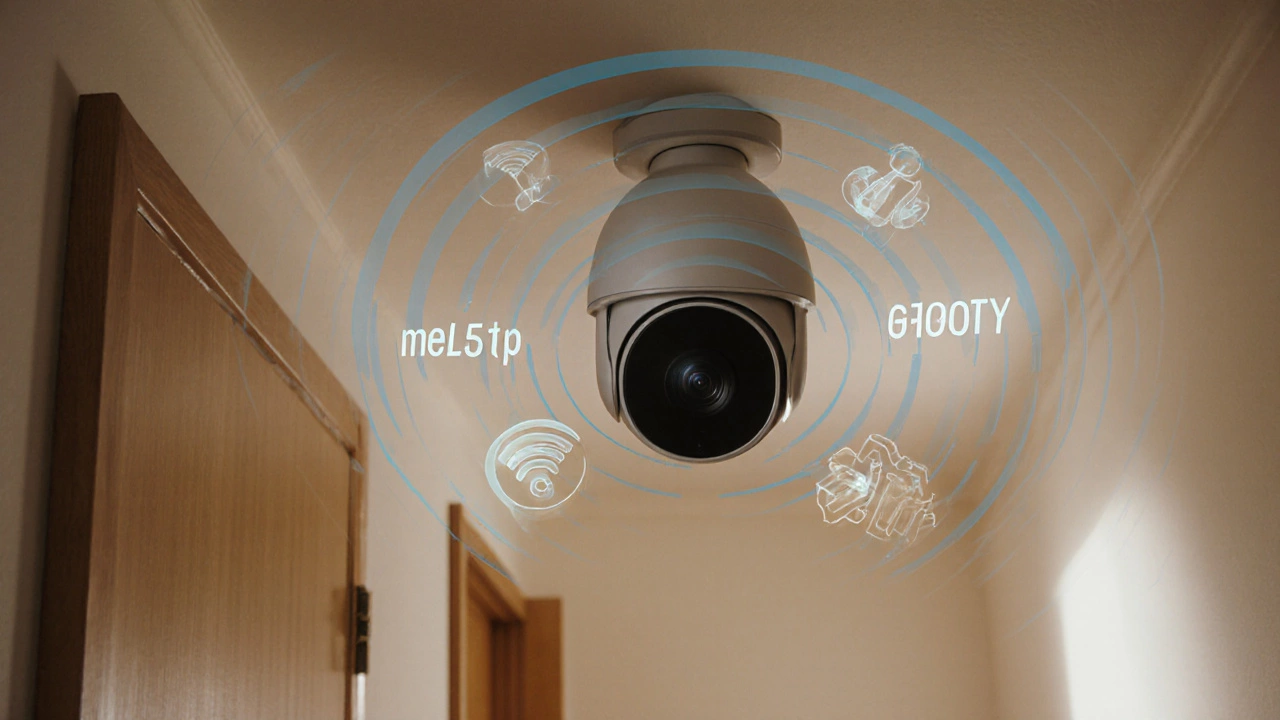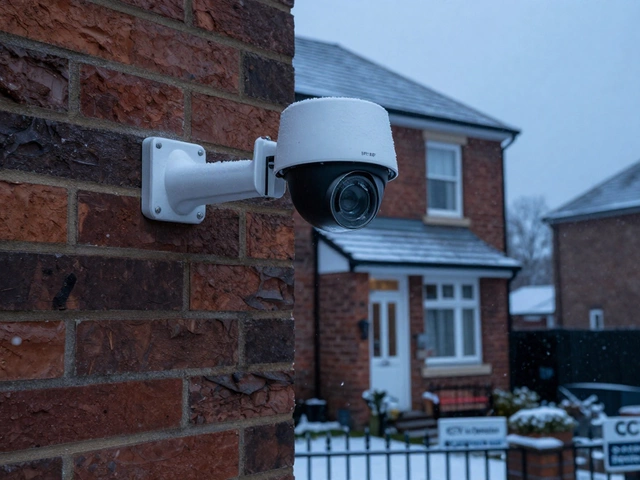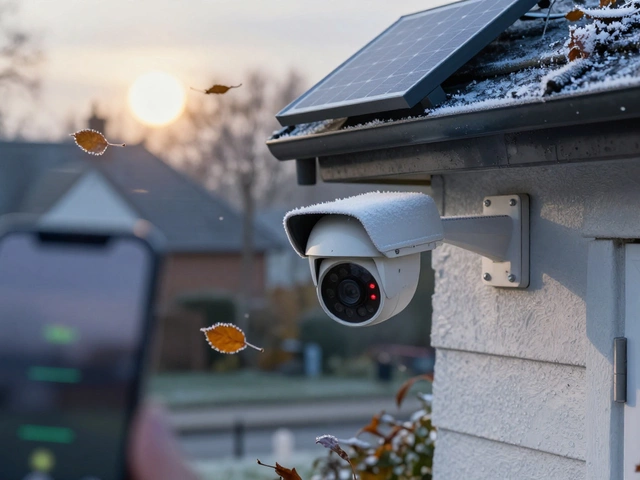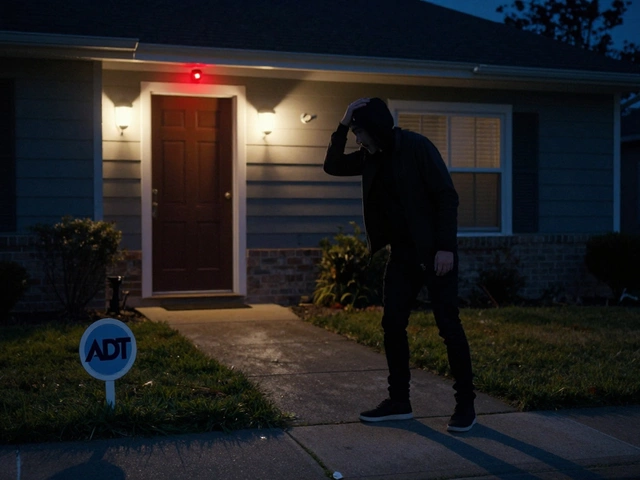Security Camera Data Calculator
Calculate your security camera's monthly data consumption based on your specific settings. This tool helps you avoid exceeding your ISP's data cap.
When you pick a Security Camera is a wireless surveillance device that streams video over a Wi‑Fi network, the first question that pops up is: how much of your internet plan will it actually eat? Knowing the answer helps you avoid surprise bills, choose the right router, and keep the feed smooth on busy evenings.
Key Takeaways
- Data usage depends on resolution, frame rate, compression codec and motion‑triggered recording.
- A 1080p camera using H.265 at 15 fps consumes roughly 5‑7 GB per month when recording continuously.
- Lowering resolution to 720p or switching to motion‑only recording can cut consumption by 60‑80%.
- Watch your ISP’s data cap - a typical 100 GB plan can comfortably host two or three mid‑range cameras.
- Use local storage or hybrid cloud to reduce outbound traffic.
Understanding the Data Basics
Internet traffic is measured in bits per second (bps). A video stream’s bandwidth is the number of bits it pushes through the Wi‑Fi link each second. To turn bandwidth into monthly consumption, you multiply by the number of seconds you actually record and then convert the total to gigabytes (GB).
For example, a 2 Mbps stream running 24 hours a day for 30 days uses:
- 2 Mbps × 60 sec = 120 Mb/min
- 120 Mb × 60 min = 7,200 Mb/hr
- 7,200 Mb × 24 hr = 172,800 Mb/day
- 172,800 Mb × 30 days ≈ 5,184,000 Mb ≈ 648 GB
That’s a lot, but most modern cameras never stream at a constant 2 Mbps. They adjust based on resolution, frame rate, and especially the compression codec.
Factors That Influence Wi‑Fi Consumption
- Resolution: Higher pixel counts (720p, 1080p, 4K) increase raw data size.
- Frame Rate (fps): More frames per second mean more pictures to encode.
- Compression Codec: H.264 is common; H.265 (HEVC) can slash data by 40‑60% with similar quality.
- Motion Detection: Recording only when movement is detected trims idle footage.
- Bitrate Settings: Some cameras let you set “low,” “medium,” or “high” bitrate manually.
- Network Overhead: Wi‑Fi management frames, handshakes, and retransmissions add roughly 5‑10% extra traffic.
- Additional Features: Night‑vision IR streams, two‑way audio, and AI analytics can push the stream higher.
Real‑World Calculations
Let’s walk through three common setups. We'll assume a 30‑day month and ignore the 5‑10% overhead for simplicity.
1. 720p (1280×720), 15 fps, H.264, continuous
Typical bitrate: 1 Mbps.
Monthly data = 1 Mbps × 30 days × 24 hr × 60 min × 60 sec ÷ 8 (bits‑to‑bytes) ÷ 1,024 (KB) ÷ 1,024 (MB) ≈ 324 GB.
2. 1080p (1920×1080), 15 fps, H.265, continuous
Typical bitrate drops to 1.5 Mbps thanks to better compression.
Monthly data ≈ 486 GB.
3. 1080p, 15 fps, H.265, motion‑only (average 8 hours of motion per day)
Effective recording time: 8 hr × 30 days = 240 hr.
Data = 1.5 Mbps × 240 hr × 60 min × 60 sec ÷ 8 ÷ 1,024 ÷ 1,024 ≈ 162 GB.
4. 4K (3840×2160), 15 fps, H.265, continuous
Bitrate around 4 Mbps.
Monthly data ≈ 1,296 GB (over 1 TB).
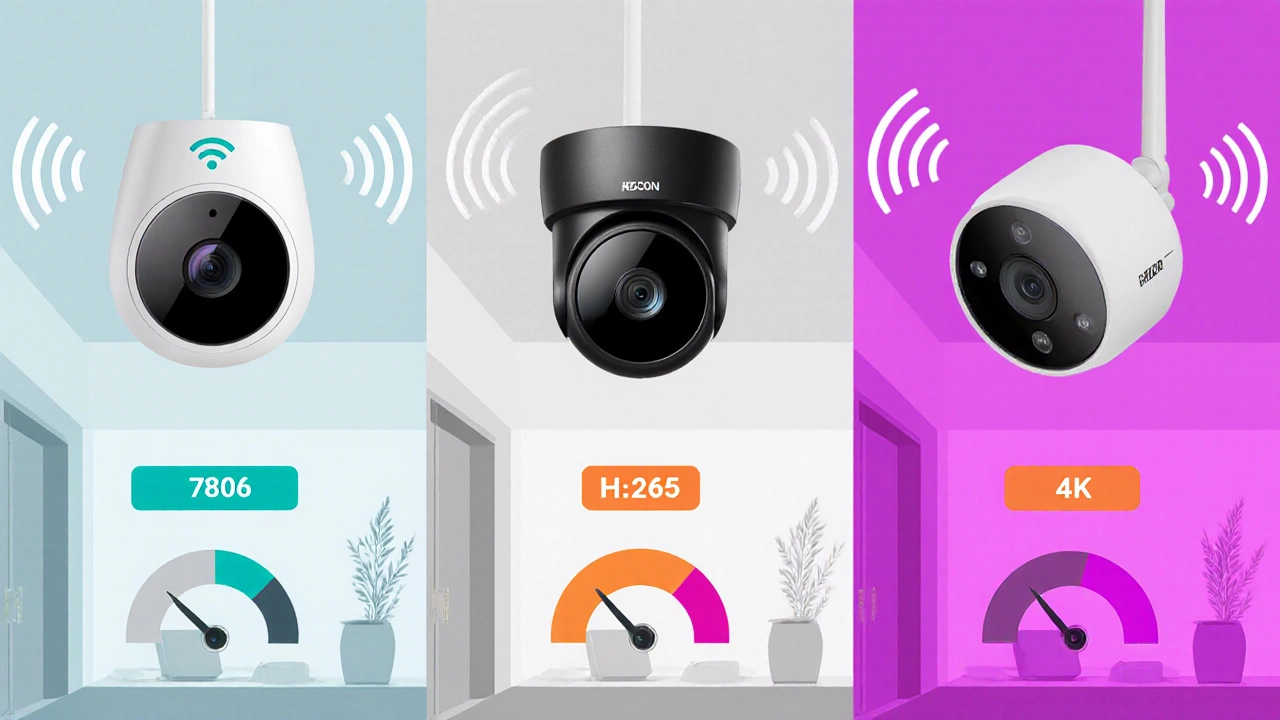
Comparison Table
| Resolution | Codec | Frame Rate | Recording Mode | Average Bitrate (Mbps) | Data per Month (GB) |
|---|---|---|---|---|---|
| 720p | H.264 | 15 fps | Continuous | 1.0 | 324 |
| 1080p | H.265 | 15 fps | Continuous | 1.5 | 486 |
| 1080p | H.265 | 15 fps | Motion‑only (≈8 hr/day) | 1.5 | 162 |
| 4K | H.265 | 15 fps | Continuous | 4.0 | 1,296 |
How ISP Data Caps Affect Your Camera Setup
Many UK broadband packages still come with a monthly cap - typically 50 GB, 100 GB, or even 500 GB for fiber bundles. If you run a single 1080p/continuous camera (≈486 GB/month), you’ll blow past a 500 GB plan in just over a month.
Strategies to stay under the limit:
- Choose 720p or limit the camera to daytime hours only.
- Enable motion‑only recording and set a higher sensitivity threshold.
- Switch to H.265 if the camera supports it.
- Store footage locally on a microSD card and upload only alerts to the cloud.
Tips to Reduce Wi‑Fi Consumption Without Sacrificing Security
- Lower Resolution: 720p is often enough for porch or driveway monitoring.
- Adjust Frame Rate: 10-15 fps looks fine for most static scenes; 30 fps is unnecessary.
- Enable Smart Compression: H.265 (also called HEVC) is now standard on many 2023‑2025 cameras.
- Use Motion Zones: Define only the parts of the view that matter (e.g., driveway, not the garden).
- Schedule Recording: Turn off night‑vision recording if you rely on external lighting.
- Hybrid Cloud + Local: Save raw footage to a local NAS or microSD; send only compressed clips when motion is detected.
- Upgrade Router: Wi‑Fi 6 (802.11ax) offers better handling of multiple streams and reduces retransmissions.
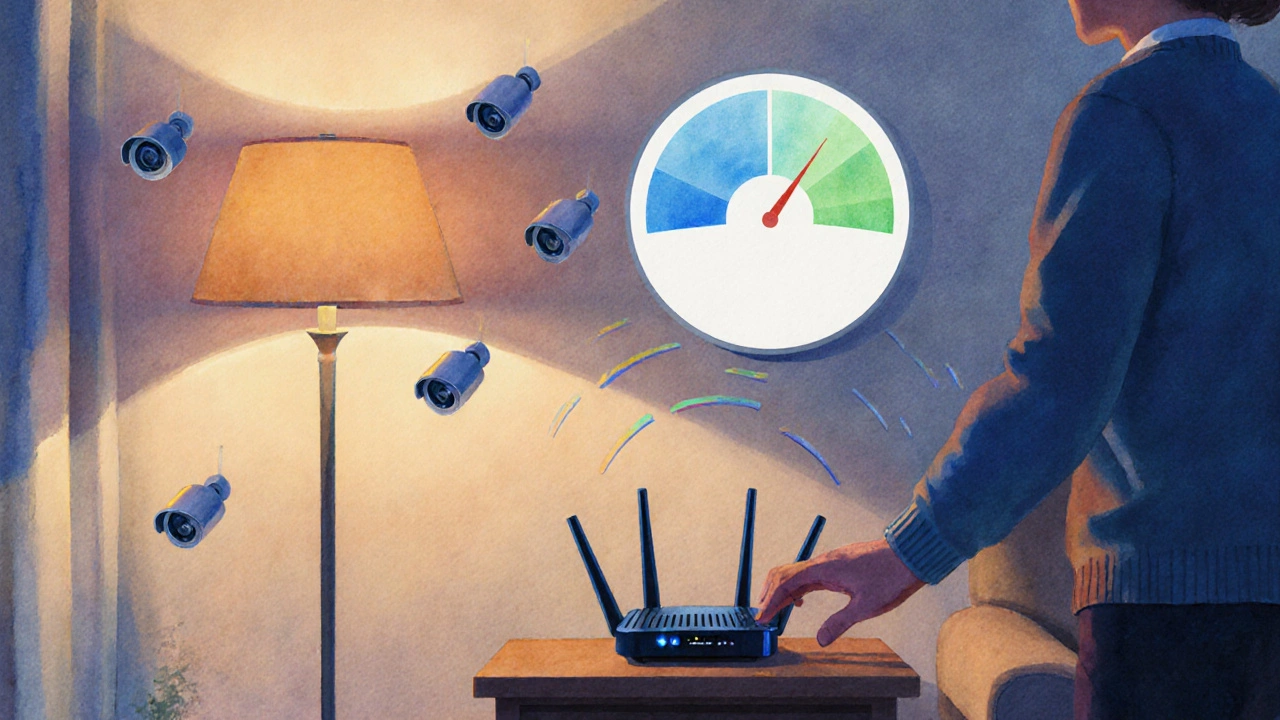
Choosing a Camera When Bandwidth Is Tight
If you know you’ll be on a limited plan, look for these specs:
- Resolution: 720p or 1080p with selectable bitrate.
- Codec: H.265 support.
- Motion‑only mode with adjustable sensitivity.
- Local storage: microSD slot (32 GB - 128 GB) or built‑in eMMC.
- Power source: Battery‑powered models often have lower default streaming rates.
Brands such as Eufy, Reolink, and Arlo released 2024‑2025 models that tick these boxes and stay under 3 Mbps even in continuous mode.
Quick Checklist Before You Install
- Identify your ISP’s monthly data cap.
- Pick a resolution and codec that balance clarity and bandwidth.
- Decide whether you need continuous recording or motion‑only.
- Enable local storage and schedule uploads during off‑peak hours.
- Test the camera on your Wi‑Fi network; watch the router’s bandwidth monitor for a full day.
Conclusion
Understanding security camera WiFi usage isn’t rocket science - it’s a matter of matching resolution, frame rate, and compression to the data budget you have. By doing the math, choosing the right codec, and leveraging motion‑only recording, you can keep your home safe without blowing your broadband bill.
How much data does a 1080p camera use per month?
A 1080p camera using H.265 at 15 fps and recording continuously consumes roughly 486 GB per month. If you switch to motion‑only recording (about 8 hours of activity per day), the usage drops to about 162 GB.
Can I use a 4K camera on a 100 GB data cap?
A 4K camera streaming continuously uses over 1 TB per month, far exceeding a 100 GB cap. To stay within the limit you would need to record only on motion, lower the frame rate, or stick to lower resolutions like 1080p or 720p.
Does Wi‑Fi 6 really help with multiple cameras?
Yes. Wi‑Fi 6 (802.11ax) improves throughput and reduces latency, which means several cameras can stream simultaneously without the typical drop‑outs you see on older 802.11n/g routers.
Should I store footage locally or in the cloud?
Local storage (microSD or NAS) eliminates outbound traffic, saving bandwidth. Cloud storage is handy for remote access and backup, but you can combine both: keep raw clips locally and upload only motion clips to the cloud.
What bitrate setting is safe for a typical UK broadband plan?
Aim for a bitrate that keeps monthly usage under half your data cap. For a 100 GB plan, a 720p camera at 0.7‑1.0 Mbps or a 1080p camera using H.265 at 1‑1.2 Mbps with motion‑only recording usually stays well within limits.

